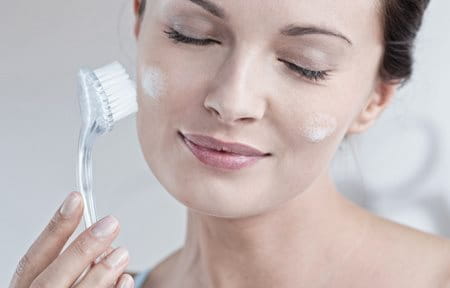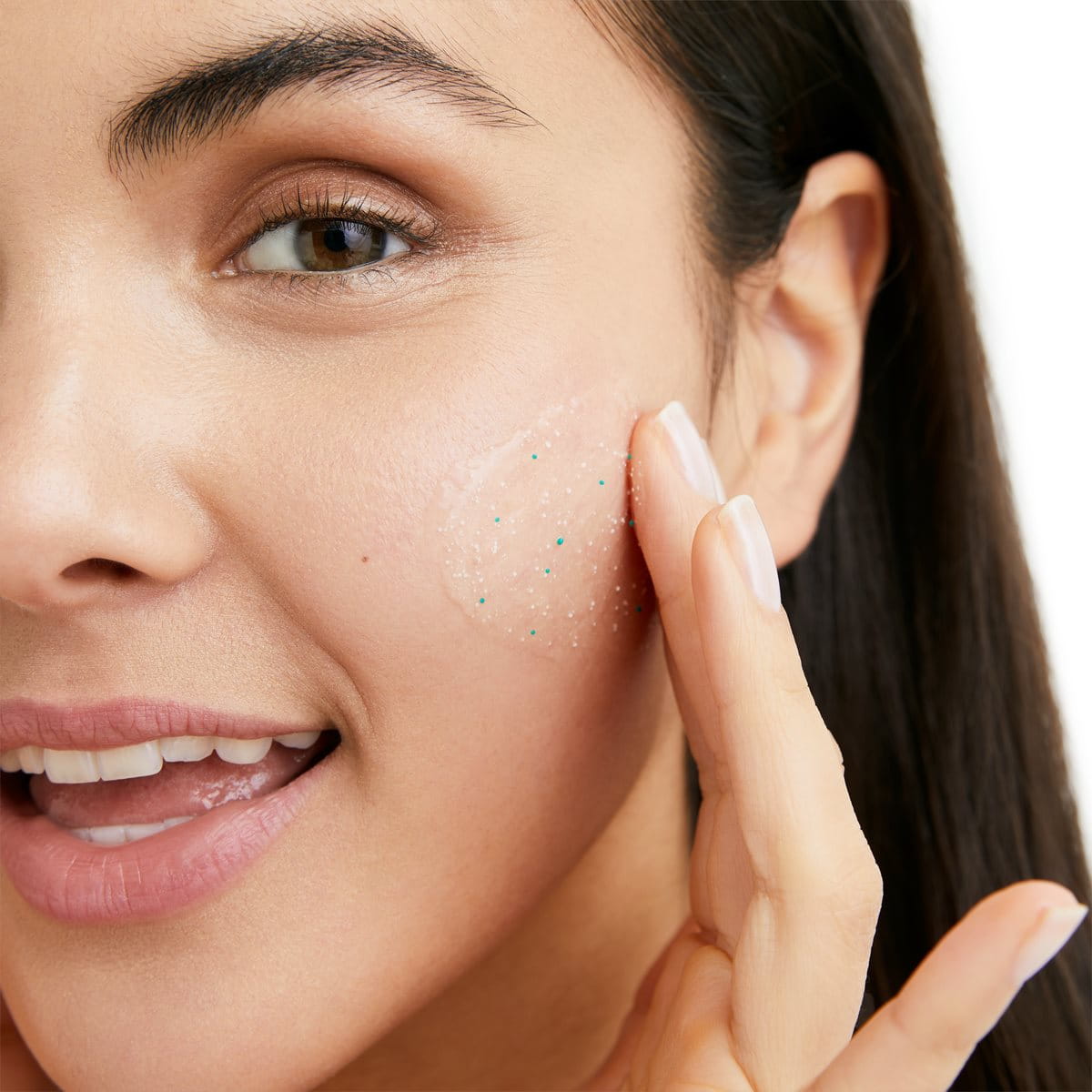Did you know our skin cells naturally renew themselves every 28 days or so? This is why knowing how to exfoliate is vital for healthy skin.
Exfoliating regularly helps prevent clogged pores and reduces breakouts while helping reduce a dull complexion. In the long-term exfoliation increases the production of collagen, which promotes skin elasticity and minimises the appearance of fine lines, so exfoliating also has anti-ageing benefits too.
Learn more about how to exfoliate and how often you should do it.
What does exfoliate mean?

When you exfoliate your skin, you remove the dead skin cells from the outer layer. This is typically done using a mechanical exfoliation tool or a chemical. Abrasive materials used for manual exfoliation include:
- dry brushes
- loofahs
- cleansing scrubs
- exfoliating gloves
Forms of chemical exfoliation involve acids (alpha-hydroxy acids or beta-hydroxy acids) and skin peels.
Exfoliation is an important part of any skincare routine, but it may not work for everyone. If you don't exfoliate safely it could damage your skin, cause acne breakouts or result in redness. Consider your skin type before choosing an exfoliation method.
Do you cleanse or exfoliate first?

Before exfoliating, you may be wondering whether to cleanse or exfoliate first. Both play an important part in a good skincare routine. Usually it will be better to cleanse your skin before exfoliating, however you could try both orders and see what works best for your skin type.
Generally, using a cleanser before exfoliating is more common. This washes the dirt and oil out of your pores, providing a clean base to then exfoliate the dead skin cells that can build-up on the skin's surface. Exfoliation after cleansing can also soften your skin to allow new skin cells to emerge. Your skin will then be ready for a moisturiser or serum.
Using a cleansing product is better for your skin than regular soap, which can strip away important lipids and lead to dry skin.
Should you exfoliate before or after shaving?
Exfoliating before shaving has many benefits. This will help prevent dead skin cells from overloading the razor blade, making it less effective.
By exfoliating you're essentially lifting the hairs, which makes for a painless shave without any hairs getting tugged. It also helps the shaving gel get closer to skin to provide more protection against irritation or cuts.
To reduce ingrown hairs, try exfoliating again two or three days after shaving, as this will remove the dead skin cells and make it easier for the new hair to come through.
How to exfoliate your face

Here is how to exfoliate your face mechanically with a scrub:
- Cleanse skin using a cleanser or face wash.
- Apply a small amount of the exfoliant onto damp skin, rubbing in circular motions using light pressure. Avoid the eye area.
- Rinse the exfoliant off with lukewarm water.
- Pat skin dry with a towel.
Specially formulated for oily and blemish-prone skin, the Eucerin DermoPurifyer Oil Control Scrub is suitable for the face and body. The exfoliating action of natural micro particles works against dead skin cells.
For ageing skin, the Hyaluron-Filler Night Peeling & Serum gently exfoliates and refines skin texture. Designed for night time use, this promotes skin renewal while plumping up even the deepest wrinkles.
How often should you exfoliate your face?
Your skin type will determine how many times you exfoliate your face each week:
- Dry or sensitive skin: Use face scrubs once or twice a week. For those with sensitive skin, do not apply too much pressure when using the product. Read more about face care routine for sensitive skin.
- Oily or acne-prone skin: Exfoliate two to three times a week to tackle blemishes.
- Combination skin: Exfoliating two or three times each week. Monitor how sensitive areas react and adjust your routine accordingly.
If you suffer from dry skin, when using a new exfoliator you should test the product on a small area of your face before using it all over. To lock in the moisture apply a moisturiser immediately afterwards.
How to exfoliate your body
It is easier to exfoliate your body when having a bath or a shower because immersing your skin in hot water opens up the pores. Use a sponge, brush or glove with the scrub to stimulate circulation and wash away the dead skin cells.
Signs of over exfoliation
Be careful not to exfoliate your skin too heavily and look out for the following signs of over exfoliation:
- reddenning
- peeling
- inflamed
- irritated
Exfoliating while using certain acne medication or products including retinol and benzoyl peroxide can cause breakouts.
For more advice on routines read Daily routine for face, and for general skincare information visit our advice section.
Our brand values

We deliver a holistic dermo-cosmetic approach to protect your skin, keep it healthy and radiant.

For over 100 years, we have dedicated ourselves to researching and innovating in the field of skin science. We believe in creating active ingredients and soothing formulas with high tolerability that work to help you live your life better each day.

We work together with leading dermatologist and pharmacist partners around the world to create innovative and effective skincare products they can trust and recommend.







